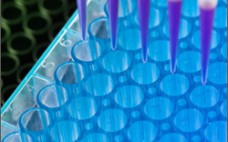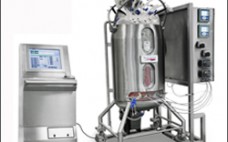Increased adoption of disposable storage vessels and mixing systems for biopharmaceutical manufacturing operations has provided economic and efficiency benefits to a number of life-science companies. Single-use technologies have reduced validation requirements, shortened turnaround times, eliminated cleaning regimes, increased the speed of set-up procedures, and facilitated the development of flexible manufacturing platforms. Many biomanufacturers have sought to extend those benefits into the field of cell culture by using disposable bioreactors. Here we describe work undertaken to develop and demonstrate…
Upstream Processing
Measuring Manufacturing Cost and Its Impact on Organizations
The first article in this periodic series reviewed the impact of cost pressures on the biopharmaceutical industry, in particular the challenges the industry faces in relation to high capital costs, complex processes, and long product development cycles (1). Here we examine what companies are doing to assess costs in decisions about process and technology choices relating to manufacturing of biologic drug substances. We will look into what companies are currently doing and what they need to be doing…
Single-Use Technology
Single-use technology began on the downstream side of bioprocessing, primarily in presterilized filter capsules and plastic biocontainers for buffers and media. Since then, it has expanded to upstream operations, including disposable bioreactors and mixers. The newest trend is to move further downstream into sterile formulation and filling. With the increasing popularity of disposable systems, some users are wondering what is being done to standardize the various components from different manufacturers and what BPSA (the Bio-Process Systems Alliance) is doing to…
Are Generic HCP Assays Outdated?
Biomanufacturers face a conflict between low-cost generic host cell protein (HCP) assays and highly sensitive but more costly process-specific HCP assays that are usually not initiated until the proof-of-concept stage. But drug developers cannot expect sufficient sensitivity from most commercially available generic assays. For some companies, multiproduct HCP assays could offer a solution to the dilemma. Biopharmaceutical manufacture using genetically modified microorganisms and cell lines is typically associated with contamination by process-related impurities. One of the most important…
Potelligent® CHOK1SV: The Evolution of the GS Gene Expression System™
Lonza and BioWa have combined their technologies to produce a new host cell line, Potelligent® CHOK1SV. This new cell line merges the benefits of Lonza’s GS Gene Expression SystemTM with those of BioWa’s POTELLIGENT® technology. Recombinant cell lines created using this new and improved host cell line have shown:
• Enhanced ADCC
• Growth suitable for a production process
• High product concentration levels in a platform process
• Ability to work seamlessly with current manufacturing processes
Join Allison Porter of Lonza Biologics as she provides a detailed look at the two technologies separately and the performance of the new Potelligent® GS-CHO technology.
Anatomy of a Single-Use Bioreactor Deployment
Rapid commissioning and start-up enabled by system design and process support
Deploying a new GMP single-use bioreactor requires the careful coordination of hardware, software, disposable components, process engineering, tech-transfer and other disciplines. When time pressure is involved as it often is in the current business environment, the task of mastering an unfamiliar piece of process equipment can provide a challenge to biopharm organizations. Recognizing this, Xcellerex has designed the XDR single-use bioreactor as a fully-integrated system that is engineered for rapid delivery and start-up, capable of going from order to delivery to working process in just 12-16 weeks. Further, the Xcellerex team uses XDR reactors every day in our own GMP operations, allowing our technical team to provide fully informed support to customers. This webinar provides an overview of XDR deployment capabilities, and shares a recent customer case history of a successful rapid XDR deployment.
Using Disposables in Cell-Culture–Based Vaccine Production
A recent private grant of US$10 billion for human vaccine applications illustrates the revival of interest in vaccine science (1). The 2009 response by vaccine manufacturers to the H1N1 pandemic revealed the convergence of three technological developments. First is a revolution in technology: Vaccines are being developed for diverse and unprecedented applications through a number of entirely new approaches. Second is the recent adoption of cultured cell-based production for a growing number of vaccines, such as influenza. And…
Are “Land Mines” Hiding in Your Supplier Records?
A growing trend in US Food and Drug Administration (FDA) warning letters has been citations for “no justified rationale.” Since 2004, warning letters taking companies to task for poorly documented decision-making and risk-assessment practices has more than doubled — from two in 2004 to four in 2008 and five in 2009. These citations are always in relationship to risk-based decisions: sampling (what, how often, and how much), nonconformances and corrective/preventative actions (when is “root cause” actual root cause,…
Is Bovine Albumin Too Complex to Be Just a Commodity?
Albumin is the most abundant serum protein. It serves several functions in vivo: e.g., binding and transport of fatty acids, hormones, and metal ions; maintenance of osmotic pressure and pH; and binding of exogenous toxins and products of lipid oxidation (1). Over time, development of large–scale purification methods have translated those functions into diagnostic, cell culture, and microbiological applications. It is important to note, however, that purification procedures can promote molecular changes and thereby add to the already…
Changes in Raw Material Sources from Suppliers
Maintaining the supply chain of single-source raw materials is of utmost importance for a biopharmaceutical company’s manufacturing operations. As often happens, a supplier will notify its customer of process changes that might affect the quality or properties of supplied materials. Occasionally, a supplier might notify the customer of substitutions in its own supply chain or other changes in the source of its own raw materials. Customers must conduct appropriate testing using the “new” raw material(s) to ensure acceptable…


